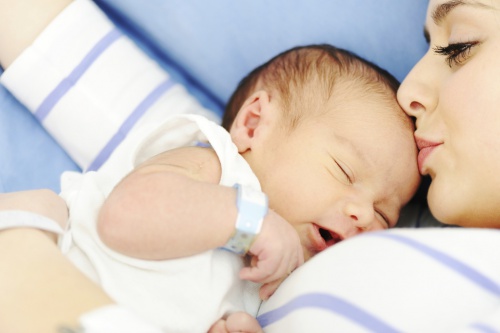How to Deal with Postpartum Depression

During the “wonderful wait” of pregnancy, the vast majority of us feel great and excited, but surprise! When we finally get to have our little ones in our arms, the hormones start to go haywire and suddenly the feeling of sadness arrives.
When this occurs it might signal the presence of postpartum depression. In this article we will help you recognize and deal with postpartum depression.
The mixture of one or several feelings of unhappiness, fatigue, guilt, among other symptoms, are what form what is known as depression. There are different levels and different types of depression.
According to the American Journal of Geriatric Psychiatry: “Depression occurs in women almost twice as frequently as it does in men. Perhaps hormonal factors are what contribute to the higher rate of depression in women. The female sex hormones are estrogen and progesterone. An existence of lower levels of estrogen seems to play a role in the etiopathogenesis of depression.”
How can we identify postpartum depression?

The timing, symptoms and intensity of postpartum depression generally vary from woman to woman. For example, in some women it may occur as soon as the baby is born. In others it occurs as long as a year after childbirth.
We can identify postpartum depression by looking out for the symptoms mentioned below:
- Having little desire to do things for ourselves and even worse having little desire to do things for the baby.
- Irritability, normal daily occurrences are enough to make us feel very upset.
- Frequent states of sadness that cause us to burst out in tears.
- Difficulty falling asleep
- In severe cases mothers might even have negative thoughts towards their baby and their own personal integrity.
How to deal with postpartum depression?

Much has been said about postpartum depression. However even today we don’t exactly know all of the reasons that cause it. We don’t know what causes some mothers to experience mild cases and others severe ones.
What we do know is that the hormonal changes that are suffered during pregnancy have an impact on the woman’s mood after she has given birth.
When we get home with our newborns it is normal to feel a bit nervous and anxious. We might also feel irritation and get sentimental easily.
“Puerperal depression” is completely normal. It has an estimated duration of two weeks and usually disappears without the need for any sort of treatment.
If a couple of weeks pass and puerperal depression does not disappear, it is then considered to be postpartum depression. If we are aware of what we are going through, it is easier to take control of the situation.
It also allows us to implement actions in order to alleviate the symptoms:
- Seek help with some tasks that the baby requires. You can seek help from family members, friends and if possible it would be ideal to hire a nurse or nanny to help you while you overcome this delicate stage.
- Communicate with your family members. This is especially important in regards to your partner, let them know how you feel. You should never hide this type of information. Good communication is the best for everyone.
- Avoid making important changes during this stage. Avoid changes such as moving, traveling, initiating new studies, etc. These changes only add more stress and consequently make our mood worse.
- Rest is essential. Try to sleep when the baby sleeps. By doing this you will be able to replenish lost energy and this will in turn increase your level of tolerance.
Postpartum depression is reversable. Researching can be useful when it comes to alleviating its negative effects. There is infinite information about natural treatments and physical exercises that can help alleviate symptoms.
It is very important to reflect and understand that what is happening to us is not our fault. The best advice is to stop and meditate on the wonderful stage that we are beginning: “becoming a mom.”
Hugging and kissing our babies frequently can also be a good way to face this situation.
All cited sources were thoroughly reviewed by our team to ensure their quality, reliability, currency, and validity. The bibliography of this article was considered reliable and of academic or scientific accuracy.
- Evans, M., Vicuña, M., & Marín, R. (2003). Depresión postparto realidad en el sistema público de atención de salud. Revista chilena de obstetricia y ginecología, 68(6), 491-494.
- Hasbún Hernández, J., Risco Neira, L., Jadresic Marinovic, E., Galleguillo U, T., González A, M., & Garay S, J. (1999). Depresión postparto: prevalencia y factores de riesgo. In Rev. chil. obstet. ginecol.
- Medina, E. (2013). Diferencias entre la depresión postparto, la psicosis postparto y la tristeza postparto. Perinatología y Reproductiva Humana.
- Mendoza, C., & Saldivia, S. (2015). Actualización en depresión postparto: el desafío permanente de optimizar su detección y abordaje. Revista médica de Chile, 143(7), 887-894. https://scielo.conicyt.cl/scielo.php?pid=S0034-98872015000700010&script=sci_arttext
- Miranda Moreno, M. D., Bonilla García, A. M., & Rodríguez Villar, V. (2015). Depresión Postparto. Trances.
This text is provided for informational purposes only and does not replace consultation with a professional. If in doubt, consult your specialist.
